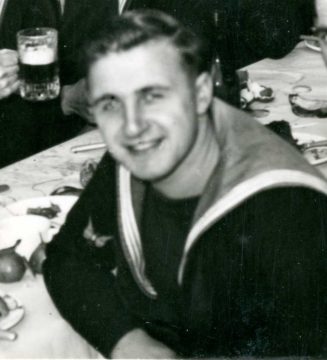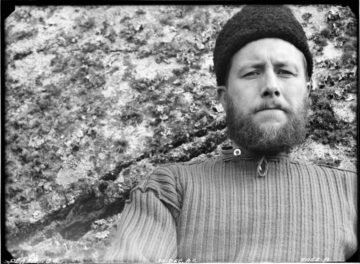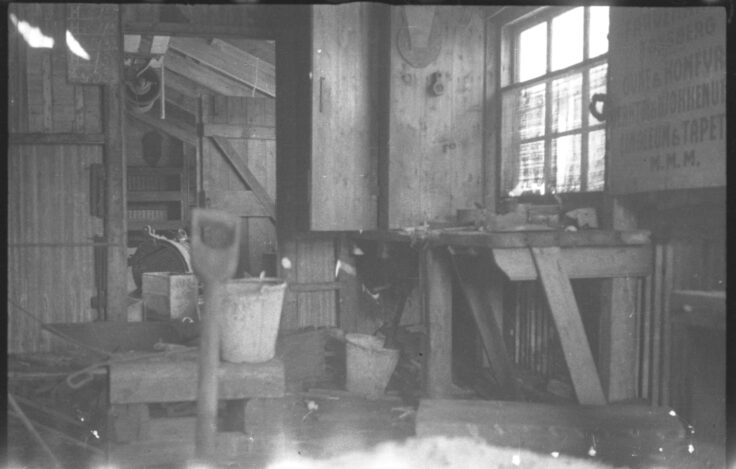On 29th January 1944 the HMS William Scoresby captained by Lieutenant Victor Marchesi and the SS Fitzroy under Captain Keith Pitt departed Stanley bound for the South Shetland Islands and the Antarctic Peninsula.
Aboard the Scoresby was the commander of Operation Tabarin, Lieutenant Commander James Marr, whose task was to establish a support base on Deception Island before sailing to Hope Bay where the expedition’s primary base was to be built.
Lieutenant Marchesi served as Marr’s second-in-command and was responsible for the seaborne component of the expedition. Most of the personnel, stores and equipment were aboard the SS Fitzroy, a Falkland Islands Company ship chartered to support the expedition.

The journey was not without risk as Scoresby’s captain noted:

But the crew had confidence in Marchesi’s experience – George James was Scoresby’s wireless operator:
Film: The Scoresby at sea, Feb 1944. (Archives ref: AD6/16/1944/1.1)
On the morning of the sixth day at sea, 3rd February, the two ships sighted Deception Island, as described by Ivan Lamb, expedition botanist:
“Thursday 3 Feb. In the early morning we had Livingstone Island on our starboard beam and Deception Island ahead. Both are high and rugged, with their snow clad slopes merging with the clouds. At about 1100 hrs., first the “Scoresby”, then the “Fitzroy”, sailed through the narrow entrance (Neptune’s Bellows) which led to the inner harbour, surrounded on all sides by high hills. As we turned the corner, the settlement came into sight; all eyes were anxiously scanning it for any signs of human occupation. On one of the large fuel tanks the Argentine flag had been painted. A door was seen to open and close in one of the buildings, but this was only due to the wind. No human being was to be seen. I was with the first party to go ashore on the motor launch. We tried to make fast to the half-broken jetty, but found ourselves riding up on rocks; eventually succeeded in mooring on the other side of [the] jetty.

Went on tour over the deserted settlement. Tremendous quantities of rusty machinery, tanks, boilers, scattered everywhere. The ground entirely volcanic cinder, black and granular. Factories of corrugated iron on a skeleton framework in very bad state, half filled with snow and ice among the rusty machinery and boilers inside, and the loose corrugated sheets clanking mournfully in the wind. Here and there loose patches of dirty snow, slowly melting. Even the high slopes are only sparsely covered with snow. Enormous bones of whales are scattered all along the beach, and in one place enormous piles of frayed-out whalebone (baleen), some of it green with algal growth and looking at first like some sort of tussock-grass. Of actual grass, there is only one small patch, a few feet in diameter, outside one of the buildings, and growing in the volcanic ash; it was flowering (specimen taken). We looked inside the huts which are to be used as living quarters; they were in good repair, with a great deal of excellent utensils inside, although everything scattered about as if the last occupants had left in a great hurry.”
Source: Ivan Lamb aboard the Fitzroy. (Archives ref: AD6/1A/1944/B)
Film: The Scoresby arriving at Deception Island, Feb 1944. (Archives ref: AD6/16/1944/1.1)
